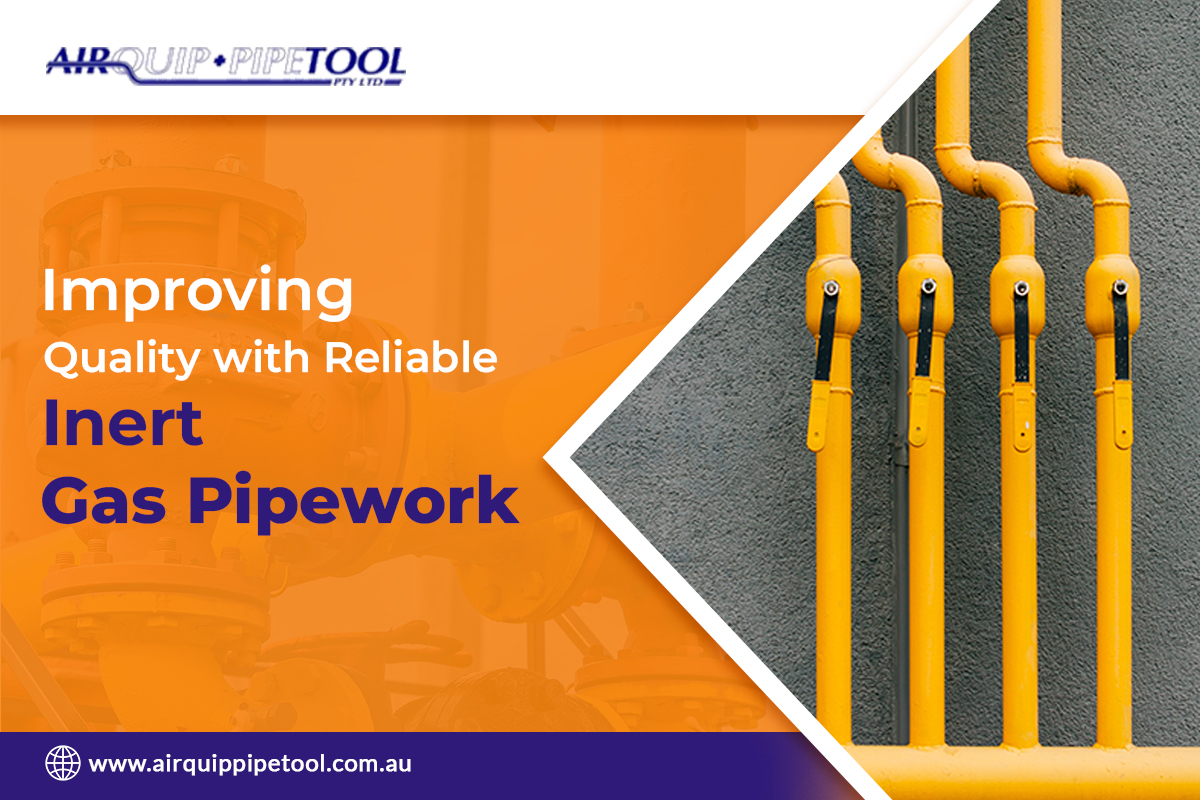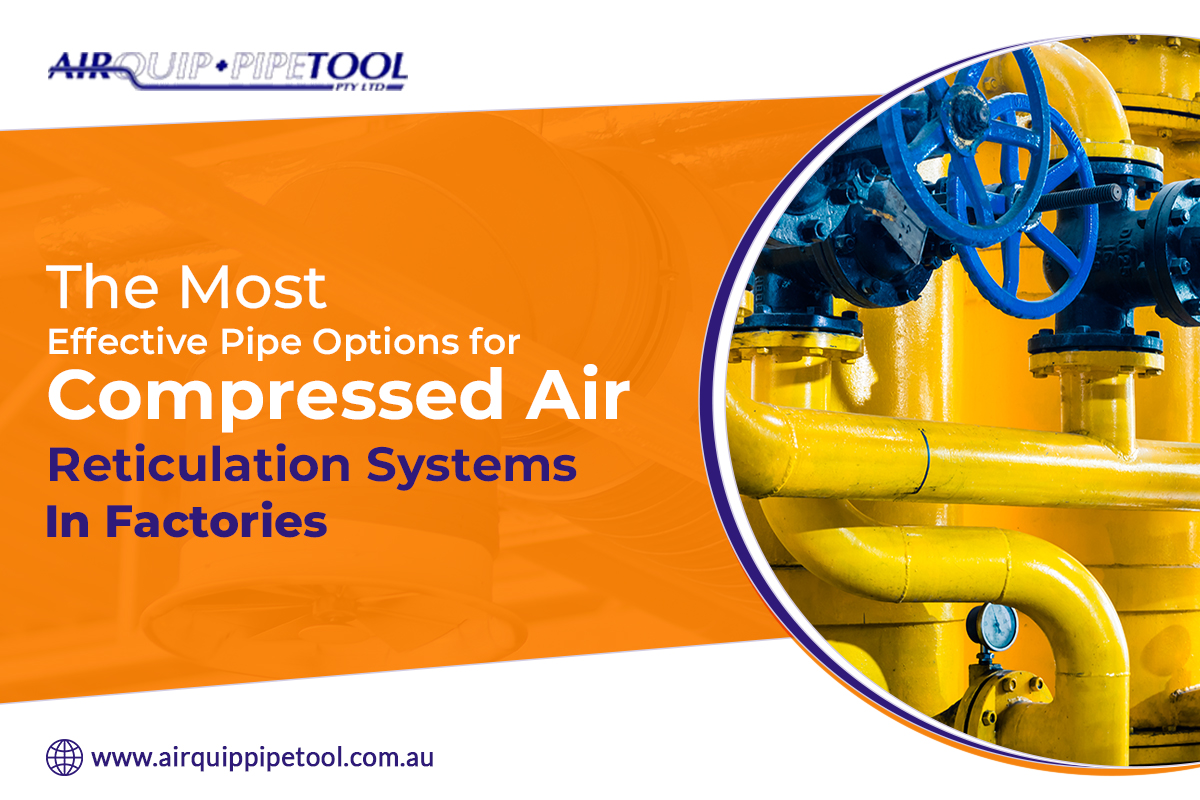- by airquippipetool
- . 28 Feb 2025
How to Prepare an Effective Compressed Air Pipe Work Distribution System? – Expert Tips
Did you know that a well-designed compressed air distribution system can save thousands of dollars in energy expenditures every year while increasing efficiency by up to 30%? When it comes to optimising performance and cutting operational expenses in compressed air pipe, every little detail counts, from minimising leaks to lowering pressure drops. To ensure your facility runs as efficiently as possible while controlling expenses, read the given 8 professional advice on how to construct an effective compressed air distribution system.
A system of pipes that is used to deliver compressed air across a building is known as a compressed air piping system. It is made up of main lines, branches, valves, and fittings that guarantee all linked machinery receives air at the proper pressure and flow rate.
Key Components of Compressed Air Piping System –
Importance Of Compressed Air Piping System –
The pressure drop issue can be significantly reduced and the system’s lifespan can be increased by putting a few best practises in the compressed air pipework distribution system design into effect.
These 8 suggestions will assist you in creating the ideal system for increased performance and energy efficiency.
The most effective option for your compressed air pipework system is typically a loop-type system. A loop system ensures consistent pressure by allowing air to flow in multiple directions. As the name suggests, these systems are made of an enormous loop of compressed air piping, which may include several drops at various locations along the loop, which permit the air to flow in any direction.
For loop-type compressed air distribution systems, the capacity of straight-line piping can usually be multiplied by 1.5. For instance, in a loop system, a 2″ aluminium pipe with a 500 CFM at 125 PSI rating would also have a 750 CFM at 125 PSI rating.
A common bottleneck in your compressed air pipework distribution system can be removed by feeding your loop with a larger pipe from a dry compressed air storage tank. Compressed air will always be available when needed thanks to a dry storage tank. A pipe at least one size larger than the pipe in the loop should be used to connect this tank to your compressed air header loop. Remember that a loop-type system can flow 1.5 times as much as a straight-lined pipe to see why.
For example, if you feed a 750 CFM loop of 2″ pipe with a 2″ straight-line pipe from the tank, the straight-line pipe can only deliver 500 CFM to the loop. This indicates that you are not making the most of your piping loop. Your bottleneck may be removed and your loop can receive the full 750 CFM of air it is rated for if you supply it with a 2.5″ pipe that is 750 CFM rated in a straight line.
One of the main causes of compressed air leaks in your system is quick couplings. If at all possible, avoid using quick couplings; they are only used when it’s necessary to quickly disconnect paint guns and/or hand tools. Hard pipe or a flexible connection with hose barbs, not a fast coupling, should be used for any connection to stationary equipment.
It is advised by the pipework installation services to minimise the number of elbows, tees, and other fittings and to maintain the piping straight. Each elbow causes friction and pressure drops. Design straight routes or use wide-radius bends. An automotive plant reduced energy costs by 15% by optimising pipe bends.
Your compressed air energy expenses may increase by as much as 30% due to leaks in your compressed air lines. You can find out how big your leak problem is by doing an overnight leak-down test. After your previous shift, just before shutting down, note the pressure in your system to do an overnight leak test. The pressure should then be noted in the morning. The overnight decline in pressure shouldn’t be more than 10% of the initial pressure. If it does, it’s time to find leaks and rectify them by conducting a leak detection study.
Leak-free systems lessen the pressure on your air compressors and greatly increase system efficiency while saving almost $50,000 units annually. When compared to copper pipe or conventional threaded iron systems, modern aluminium piping systems can significantly reduce compressed air leakage.
Isolation valves allow sectional maintenance. Aerospace manufacturing units use isolation valves to minimise production halts during repairs. There should be a drip leg valve at the bottom of each drop and a primary isolation ball valve accessible from ground level. This makes it simple to eliminate any impurities that could have gotten into the system.
Place valves near usage points. Metal fabrication workshops benefit from this for rapid system adjustments. Potential future expansions and adjustments are made easier and more affordable by installing valves, tees, and plugs throughout the system from the beginning. With the help of isolation valves, you can isolate the specific system component that has to be fixed or altered without completely stopping the system. Every time you need to make a change or repair, you will have to shut down the entire system if there are no valves. To minimise disturbances and allow for future expansions and adjustments, install isolation valves throughout the main piping system.
To drain moisture from the system and keep it from reaching the point of use, many compressed air pipework system designers traditionally advised pitching the main header to a corner and adding pipe drops down the top of the main header. However, the above arrangement works only when the compressed air piping is greatly enlarged to reduce the air’s velocity as it passes through the pipe. As you may guess, compressed air will carry almost all impurities, including water, to its destination when it is moving through the pipe at a speed of 20 feet per second.
Implementing these expert tips ensures an efficient compressed air distribution system, leading to significant energy savings and reduced operational costs. Partner with Airquip and Pipetool Pty Ltd for top-tier pipework installation services. Their expert solutions ensure leak-free, high-performance compressed air systems that enhance productivity and cut costs. Contact them today to transform your facility’s air distribution efficiency!
 " alt="">
" alt="">
How to Prepare an Effective Compressed Air Pipe Work Distribution System? – Expert Tips
 " alt="">
" alt="">
 " alt="">
" alt="">
The Most Effective Pipe Options for Compressed Air Reticulation Systems in Factories



Copyright © 2025 airquippipetool | All rights reserved